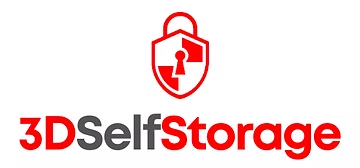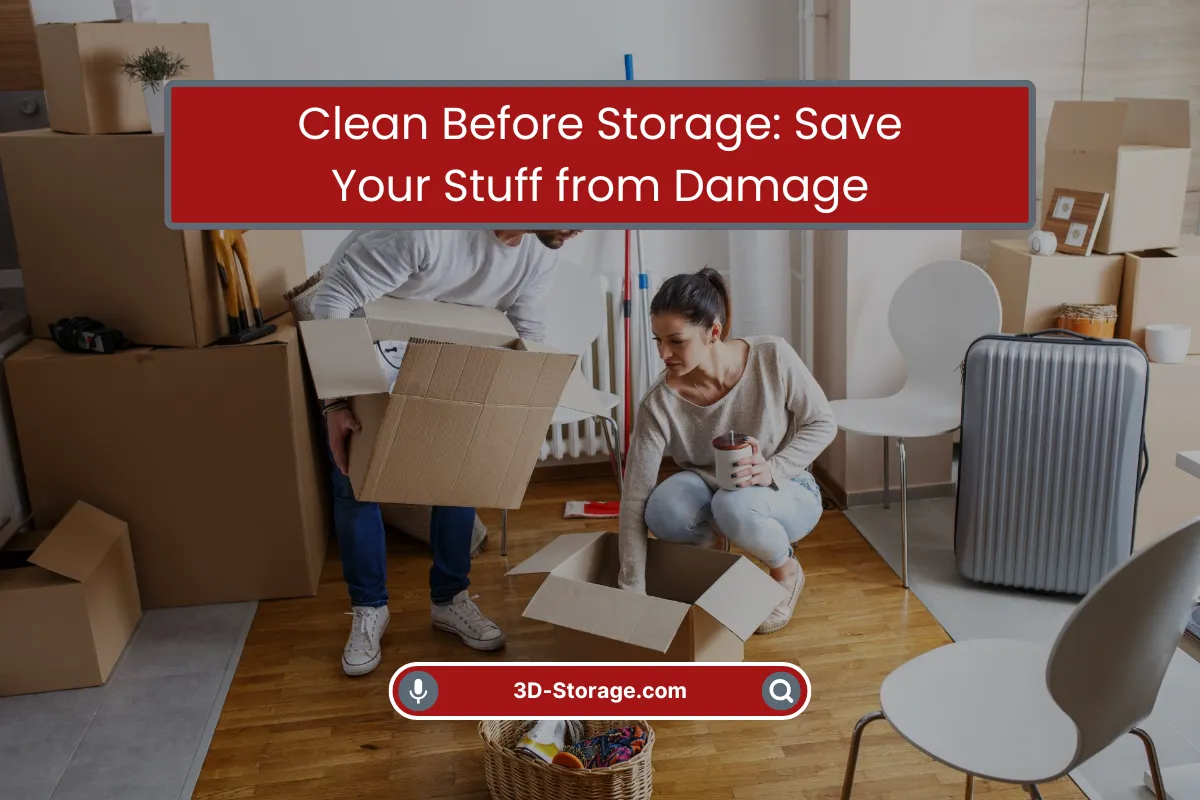A few months back, I was helping a regular customer access her unit after a long stretch. She was excited to get her winter coats back. But when she rolled up that door, a wave of sour, musty air hit us so hard it made my eyes water. Her beautiful wool coats were covered in a faint, fuzzy film and smelled like a damp basement. The culprit? A single latte she’d spilled on her sleeve last season. She’d meant to get it cleaned, forgot, and figured it was “fine” for storage. That invisible stain became an all-you-can-eat buffet for mold.
In that moment, it hit me: most people have no idea that the most important step in storage happens before you ever set foot in your unit. It’s not about the lock you choose or the size you rent. It’s about the cleaning.
I get it. When you’re in the chaos of moving, the last thing you want to do is spend a weekend meticulously washing things you’re just going to box up. It feels counterintuitive. But after a decade in this business, I can tell you this: that one weekend of elbow grease can save you hundreds of dollars and a whole lot of heartache.
The Stuff of Nightmares (True Stories from the Unit)
I’m not exaggerating to scare you. I’m telling you because I’ve seen it happen.
There was the avid camper who shoved his slightly smoky-from-the-campfire gear into a unit. Six months later, he found that mice had chewed through his expensive sleeping bag and backpack to get to the microscopic food particles he couldn’t even see. They’d made a cozy home in his tent.
Then there was the woman who packed away her grandmother’s cherished china set. It “looked clean,” but tiny, invisible grease spots from cooking attracted pests. She opened her boxes to find her heirlooms covered in insect droppings. She broke down crying right there in the hallway.
These aren’t freak accidents. They’re the predictable result of storing anything that can spoil, attract, or decay.
Why “Looks Clean” Isn’t “Storage Clean”
Your everyday standard of clean doesn’t cut it for long-term storage. That shirt you wore for a few hours? It’s covered in invisible body oils. That “clean” plate? It has a microscopic film of grease. In the dark, stagnant, sometimes humid environment of a storage unit, those tiny residues become the main event. They attract pests, breed bacteria, and lead to permanent staining and odor.
I learned this myself the hard way. I once stored a wooden side table after just giving it a quick wipe-down. Months later, a perfect, ghostly water ring had bloomed under the finish from a moisture spot I’d missed. Storage amplifies every tiny oversight into a major problem.
The Usual Suspects: Where Most People Go Wrong
1. Clothing: The Biggest Offender
This is the number one culprit. That “barely worn” dress or jacket is a ticking time bomb. Deodorant residue, perfume, and natural body oils can oxidize and turn into yellow stains that are impossible to remove.
My golden rule: If it touches your skin, it needs to be washed. No exceptions. Don’t just trust the sniff test.
- Check every pocket. I’ve seen melted lip balm, moldy tissues, and a forgotten granola bar that made an entire box of clothes smell like rancid nuts.
- Spring for dry cleaning. For wool, silk, or anything delicate, the professional cleaning cost is a tiny insurance policy against a ruined garment.
- BONE DRY is the mantra. Air-dry everything completely before packing it. Dampness is the enemy. A single slightly-damp towel can take down an entire box of linens with mold.
2. Furniture: It’s More Than a Surface Clean
- Wood: Don’t drench it! Use a proper wood cleaner to remove grime, then condition it. This seals the wood and prevents it from drying out or absorbing ambient moisture that can cause warping.
- Upholstery: Vacuum is your best friend. Get deep into the crevices of the couch cushions where crumbs and pet hair love to hide. Flip the cushions and vacuum the bottoms too. Any food residue is a welcome mat for bugs.
3. Kitchenware: It’s Never “Clean Enough”
This is where the most horror stories originate. That “clean” blender? There’s a film of smoothie residue under the blade. The “rinsed” coffee pot? It’s still got oil inside.
- Disassemble everything: Wash the blender jar, the coffee maker parts, and the stand mixer attachments. Run vinegar through appliances to descale them.
- Pots and Pans: Scour them. Pay attention to the bottoms and sides where grease splatters and hardens. That baked-on grease will only get worse.
- Cast Iron: This is sacred. Clean it, dry it thoroughly on the stovetop to evaporate all moisture, and give it a fresh coat of oil to prevent rust. Your future fried chicken depends on it.
The Game Plan That Doesn’t Make You Hate Your Life
Trying to do this all the night before you move is a recipe for disaster and cutting corners. Here’s the timeline I recommend to my customers:
- 3 Weeks Out: Start with clothes. A load or two a day makes it manageable.
- 2 Weeks Out: Tackle big furniture. This takes time and needs to dry properly.
- 1 Week Out: Meticulously clean kitchen items and electronics (wipe down, remove batteries!).
- Last Few Days: Final packing. By now, you’re just organizing pristine, storage-ready items.
Know When to Call for Backup
Some things are worth the professional touch. If you have a priceless Persian rug, an antique leather chair, or a delicate heirloom, pay a pro to clean it. They see the invisible stains and potential problems that we miss. It’s not an expense; it’s preservation.
The Bottom Line
I know this feels like a tedious, annoying step. But you’re storing this stuff because it has value to you—either monetary or sentimental. Taking a few hours to clean it properly is the single best way to ensure it stays that way. The customers who never have problems are the ones who take this seriously.
Do the work now. Your future self, opening a box of fresh, clean, undamaged belongings, will be so grateful you did.








0 Comments